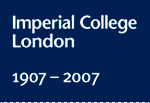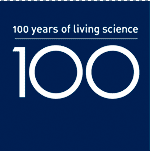Timeline
- 1845 – 1899 |
- 1900 – 1909 |
- 1910 – 1919 |
- 1920 – 1929 |
- 1930 – 1939 |
- 1940 – 1949 |
- 1950 – 1959 |
- 1960 – 1969 |
- 1970 – 1979 |
- 1980 – 1989 |
- 1990 – 1999 |
- 2000 – present
Imperial College 1920 - 1929
World
 1920 - First Commercial Radio Broadcast Aired in USA
1920 - First Commercial Radio Broadcast Aired in USA
On November 2, 1920, station KDKA made America’s first commercial broadcast. They chose that date because it was election day, and the power of radio was proven when people could hear the results of the Harding-Cox presidential race before they read about it in the newspaper.
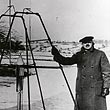 1926 - Robert Goddard Fires His First Liquid-Fuel Rocket
1926 - Robert Goddard Fires His First Liquid-Fuel Rocket
A pioneer of modern rocket propulsion, Dr. Robert Hutchings Goddard launched the world's first liquid-fueled rocket on 16 March 1926. The rocket, which was dubbed "Nell", rose just 41 feet during a 2.5-second flight that ended in a cabbage field, but it was an important demonstration that liquid-fuel propellants were possible. From 1930 to 1935 he launched rockets that attained speeds of up to 550 miles an hour.
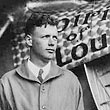 1927 - Lindbergh Flies Solo Across the Atlantic
1927 - Lindbergh Flies Solo Across the Atlantic
Charles Lindbergh became the first pilot to fly solo and non-stop across the Atlantic Ocean, flying from Roosevelt Airfield (Nassau Country, Long Island) New York, to Paris on May 20-May 21 1927 in his single engine aircraft, The Spirit of St Louis.
back to top
College
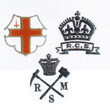 1925 - Developments for the University of London BSc and the Imperial College Associateships
1925 - Developments for the University of London BSc and the Imperial College Associateships
A difficulty for students in the 1920s at Imperial was that some of the courses for which they would receive an Associateship from RSM, RCS and C&G were not taught elsewhere in London University and could not count towards the BSc that students had to take besides the Associateship or DIC (Diploma of Membership) of Imperial College.
These included Aerodynamics and Aeronautical Engineering, Astrophysics, Biochemistry, Chemical Technology and Fuel and other specialised branches of Engineering, Entomology, Meteorology, Mining Geology, Oil Technology, Optical Engineering and Technical Optics and Plant Physiology. The outcome in 1925 was that London University agreed to set final examinations in the subjects in which Imperial set its Associateships.
back to top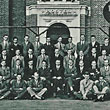 1926 - The first student hostel was opened in Beit Quadrangle
1926 - The first student hostel was opened in Beit Quadrangle
The original Students Union building in the north of the quadrangle was designed by Sir Aston Webb and built in 1910-1911.
Student accommodation was needed as an addition to the social life of Imperial and so plans for a student hostel were drawn up. The UGC gave a substantial sum, supplemented by personal generosity of governors and some City Livery Companies.
In April 1926, the hostel opened with accommodation for 49 students and a warden. During the 1926-1927 session the Hostel places were taken by 20 C&G students, 15 RSM students and 14 RCS students.
Living in hall as opposed to living in digs had such an appeal that a waiting list for places swiftly developed. Seeing this as an opportunity to improve facilities for the Union and Botany, the Governing Body launched an Extension Scheme, and a Fund set up for donations. The extension plan was for two new storeys to the Union building, one storey to accommodate 27 more hostel bed-sitting rooms with a wardens flat, the top storey to contain modern kitchen and dining facilites for 400, thus freeing the current dining space for social purposes.
An article in Phoenix on the twenty-first anniversary of the union describes the accommodation, and notes that there was a reading room for women students as they were excluded from the bar.
back to top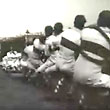 1928 - First film footage
1928 - First film footage
The first recorded film footage of activities at Imperial College London was made at Morphy Day in 1928. Watch the recording here, including film of rowing at Putney and Sports Day at Chelsea Football ground.
People
 Sir Napier Shaw (1854-1945)
Sir Napier Shaw (1854-1945)
Sir (William) Napier Shaw FRS graduated in Maths and Natural Sciences at Cambridge University in 1876. His work on hygrometry, evaporation and ventilation led to chairmanship of the atmospheric pollution committee. Meteorology then became his career as director of national meteorological organisation and later, head of the British Meteorological Office in 1905. He was an advisor to the government during WWI and oversaw the transfer of the Meteorological Office to the Air Ministry in 1920.
Shaw became the first Professor of Meteorology in the UK at Imperial 1920-1924. The Air Ministry having close associations with the Meterological Office was of mutual benefit. Staff were seconded to Imperial for teaching and demonstration purposes and Meteorological and Air Force staff could attend relevant College lectures.
back to top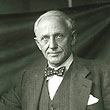 George Ingle Finch (1888-1970)
George Ingle Finch (1888-1970)
George Ingle Finch was one of the first staff members of the Chemical Engineering Department in 1913. He specialised in electro-chemistry and from the 1930s, electron diffraction. He combined his interest in climbing with his professional work. Understanding the value oxygen would give at high altitudes he developed lighter weight oxygen supply equipment and used it in his climb on Mallory’s 1922 Everest Expedition, the first to be equipped in this way, and reached over 8000m.
Finch was a stalwart of Imperial College Exploration Board, which encourages and supports student expeditions.
back to top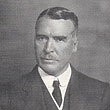 Sir Thomas Holland (1868-1947)
Sir Thomas Holland (1868-1947)
Sir Thomas Holland was rector between 1922-1929.
Thomas Henry Holland won a scholarship to the RCS in 1884 and graduated with 1st Class with Honours in Geology in 1888, and also won the Murchison Medal and Prize. At the RCS, Holland came under the influence of T.H. Huxley who was at that time Dean. On graduating, Holland worked for Professor Judd at the RCS, until he was awarded a Berkeley Fellowship to Owens College Manchester in 1889. He took the opportunity of his appointment as Assistant Superintendent in the Geological Survey of India in 1890 to travel and arrived in Indai via America, Canada and the Far East. One of his duties was to be the Curator of the Geological Museum and Laboratory.
He proved himself to be an able organiser and administrator and was made Director of the Geological Survey of India in 1903, being elected Fellow of the Royal Society in 1904. He was appointed KCIE in 1908 for his services to the Indian Geological Survey.
He returned to Britain in 1910, taking the Chair of Geology and Mineralogy at Manchester University. After a period in Britain he again took a post in India, becoming President of the Indian Munitions Board in 1916.
He became Rector of Imperial College in 1920. He immediately set about getting the Associateship recognised as qualifying for the BSc degree with Honours by the University of London. His influence on College corporate life was also felt, with the impetus he gave to establishing the College Hostel. He was a very energetic man, with a vision and drive that enhanced any institution he worked for.
back to top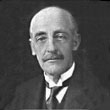 Sir Gilbert Walker (1866-1956)
Sir Gilbert Walker (1866-1956)
Sir Gilbert Walker FRS graduated in mathematics from Cambridge University in 1889. His early work was on dynamics and electromagnetism. In 1903, he became Director General of Observatories in India which was where he became interested in meterology, when, having experienced the difficulties caused by the unprediactability of monsoon rainfall, he discovered the Southern Oscillation. He extrapolated the experience to world wide weather systems. As Professor of Meterology at Imperial College in 1924, he worked on cloud forms using cellular structure experiements. In 1934 Walker retired but contributed to the WWII war effort by consulting on long range weather forecasting.
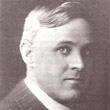 Sir Leonard Bairstow (1880-1963)
Sir Leonard Bairstow (1880-1963)
A student of Mechanics at the Royal College of Science 1898, Sir Leonard Bairstow joined the National Physical Laboratory where he assisted with establishing the Aerodynamics Division. He became a Professor of Aerodynamics in Imperial's new Aeronautics Department in 1920. Bairstow was appointed to the Zaharoff Chair of Aviation in 1923, becoming head of the Aeronautics Department, retiring in 1945.
Bairstow was Vice President of the Royal Aeronautical Society 1930-1934 and a Member of the Aeronautical Research Council and President 1949-1952. He worked on wind tunnel design and stability of aircraft at a time before mass flight and prior to WWI. His 1919 book Applied Aerodynamics was still relevant in WWII as it was reprinted in 1944.
back to top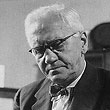 Sir Alexander Fleming (1881-1955)
Sir Alexander Fleming (1881-1955)
The 1945 Nobel Prize for Physiology and Medicine was awarded jointly to Sir Alexander Fleming for the discovery of penicillin and to Sir Howard Florey (1898-1968) and Dr Ernst Chain (1906-1979) for its subsequent development.
Sir Alexander Fleming worked in Sir Almroth Wright’s (1861-1947) Inoculation Department at St Mary's Hospital, and in the course of research in 1928 discovered the fungal mould penicillium notatum from which the anti-biotic drugs know as penicillin came.
Sir Ernst Chain and Sir Hugh Florey worked in Oxford to synthesise the drug and render it suitable for therapeutic purposes. Sir Ernst Chain was professor of Biochemistry at Imperial College in the 1960s. Ernst Chain's contribution to Imperial is celebrated today at Imperial through the Ernst Chain Prize.
back to top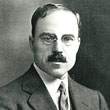 1929 - Sir Henry Tizard
1929 - Sir Henry Tizard
Sir Henry Tizard (1885-1959), a chemist and mathematician, was Rector of Imperial between 1929-1942. He was influential in national scientific institutions, worked in aeronautics and began working on radar before WWII. He led the Tizard Mission to America in 1940, an important technical information sharing mission, including radar and the jet engine.
© 2007 Imperial College London
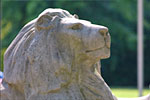
Through the first decade of the twenty-first century the campaign seeks to philanthropically raise £207 million from Imperial’s alumni, staff and friends, and donations from charitable foundations and industry.
Where your support can make a differenceGive now
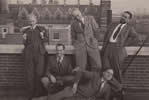
We’re celebrating 100 years of living science with 100 stories. We’ve collected some of them already, and invite you to share your own stories and memories.
